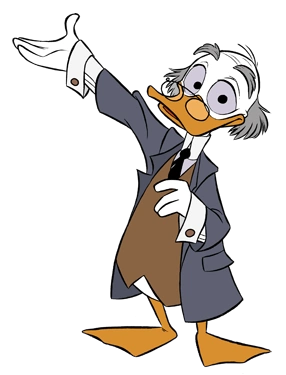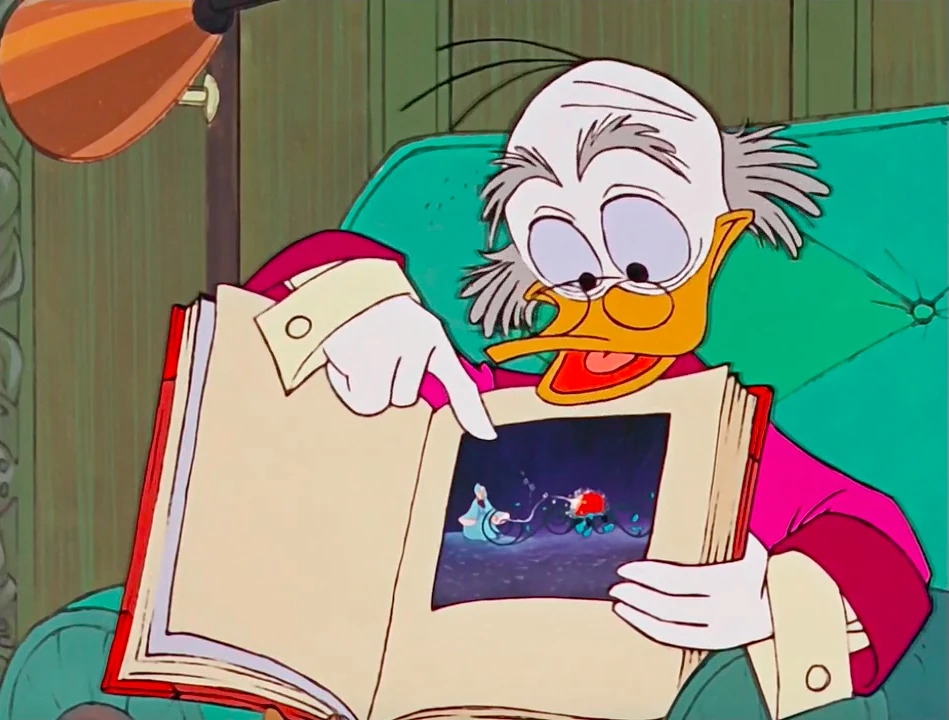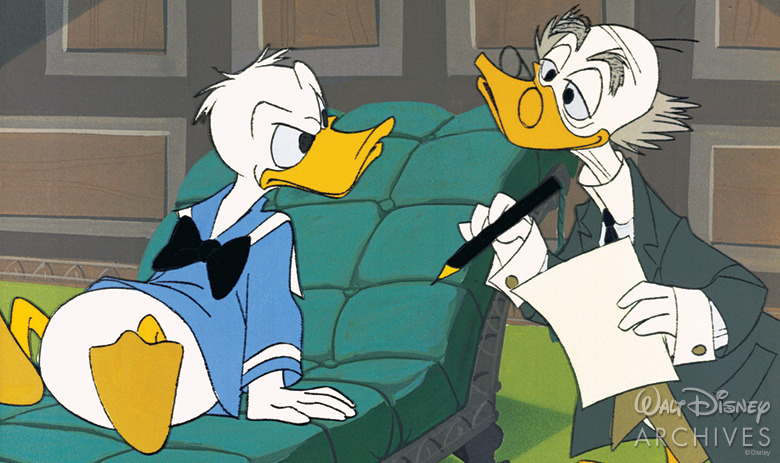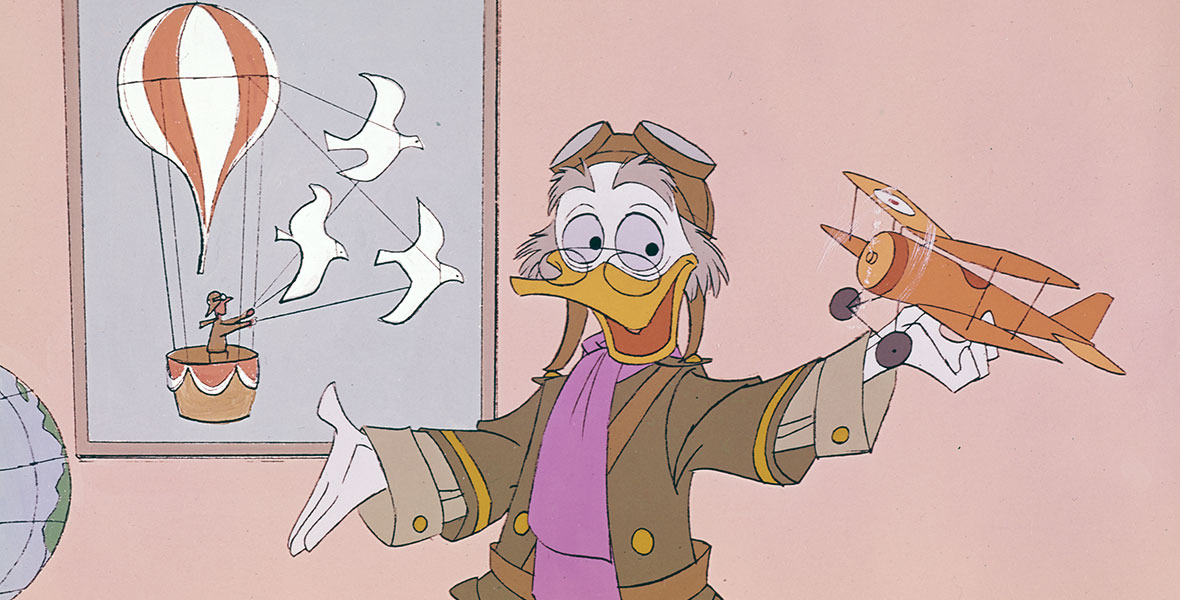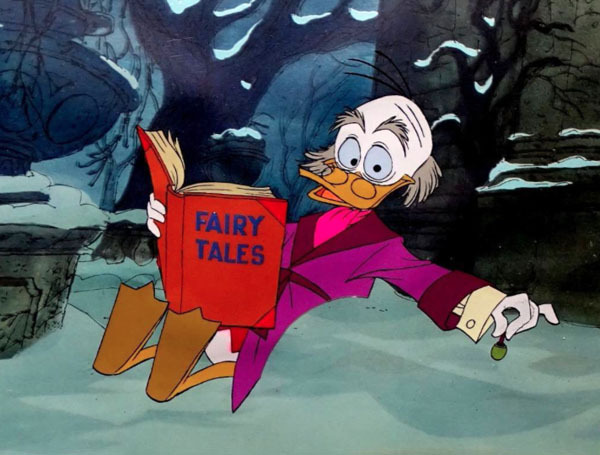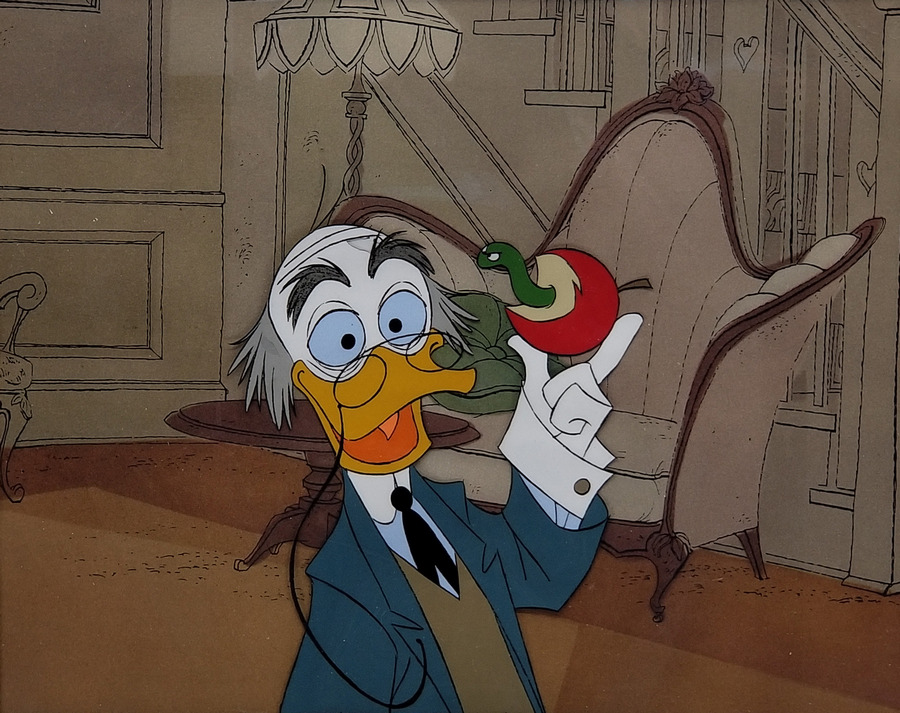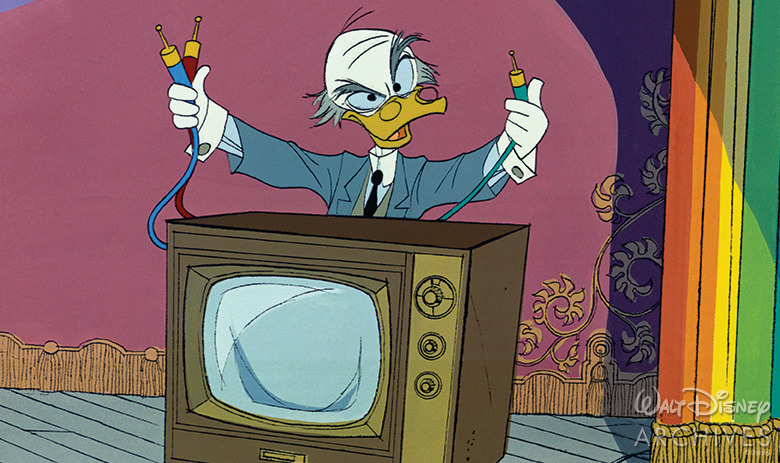
Ludwig Von Drake: A headcanon
|
Headcanons are a quintessential feature of fandoms and communal existance within fan spaces in general. More often than not pieces of media we obsess over happen to be quite frugal in providing their audience with the juiciest niche aspects about the worlds that are designed for their characters. The characters themselves are left with some grey areas which chronically online folks can fill with their own passionate views. Sometimes it's natural, others it's deliberate, but never the less communities are build around media and people start to have their opinions about aspects not covered in depth by the authors, and so headcanons are formed. Headcanons are aspects of the worlds and of the lives of the characters of works of fiction which become canonical for the audience, or sectors of the audience, or individual people, sometimes causing even contradictions between the actual canon of a media. A biography for a know-it-all
Ludwig Von Drake was born and raised in Wien, Austria. As a young drake he was enlisted in WWI and served in the Austro-Hungarian Aviation Troops and, although being able to avoid the tragedy of the trenches, he faced the horrors the war caused to the civilian population and to his older friends, who (the ones that were lucky enough to come back) suffered from severe PTSD. He had already developed, by that time, a deep hunger for knowledge, aiming at building a better society for everyone, studyng a wide range of topics and earning multiple degrees at an unprecedented rate at Universität Wien. The fertile intellectual environment of the interwar years influenced his endeavours and he, among other studies, was a late pupil of Sigmund Freud. He enrolled young in the teaching staff at Wien, just before the war, and after 1918 became rapidly reknown for his holistic lectures on Maths, Anthropology and the new, at the time, theories about Nuclear Physics. His will to use the knowledge he accumulated fot the improvement of the conditions of the populace brought him into politics and he started to grow closer to left-wing circles. During those turbulent times, between the end of the 1920s and the early 1930s, he joined the Republikanischer Schutzbund and continued to advocate for social reform against the increasingly authoritarian Austrian institutions. With the establishment of the Austrofascist dictatoriship and the banning of the Schutzbund, Ludwig fled Austria for the United States, were he started to teach, at the University of Calisota. initially he decided to live a more private life, removed from the fiery political environment of the time, but, as the situation in Europe became more tragic, he started to campaign for american intervention in WWII. During these years he met Scrooge McDuck, at the time partially estranged from his family. They collaborated on some projects for the PWA in Calisota and started an unlikely friendship. After the US entered the war, Ludwig was involved in the Manhattan Project, although, as many contributors to it, he later rebuked the use of the atomic bomb and frequently spoke against nuclear proliferation. At the end of the war, with the psychosis surrounding the Second Red Scare, his past involvements with left-wing paramilitary groups was examined by the House Un-American Activities Committee. Scrooge, to protect him from goverment persecution, suggested him to leave the country for the time being. He offered him to stay in the McDuck properties in Scotland, arranging for him a contract at the University of Glasgow. There he met Matilda McDuck and the two fell in love, getting married soon after. When the situation in the US became easier, he came back and returned to his teaching post at UoC. This is the moment when he was reached by Hollywood producer Walter Elias Disney, who asked him to be the face of his new series of educational programs that were supposed to be broadcasted on television, one of the first attempts at popularizing science on the fastest growing new medium of the decade. Von Drake accepted and he rapidly became a household name in the US and abroad, serving as an inspiration for David Attenborough, Carl Sagan and Piero Angela, among others, who always quoted in interviews Von Drake's delivery style as something they looked up to in their attempts at science communication. From this time onward his life became quite frankly a more public one, so there is no need to really dig into his adventures and endeavours futher: you can just pick a pocketbook or a magazine from the local newstand to read about what he is doing at the moment. See you next time! Per un dossier sulle interpretazioni fumettistiche del personaggio, con un lavoro molto curato di ricerca delle fonti, consiglio Chi è Pico de Paperis?, a cura di Simone Cavazzuti. |
